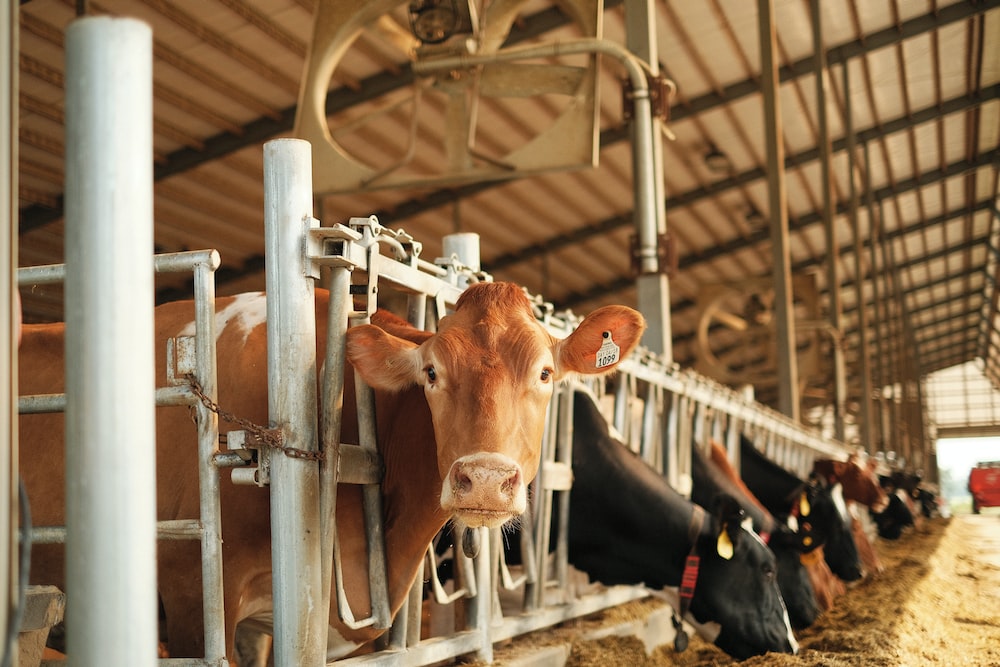Optimizing Dry Cow Nutrition: A Comprehensive Guide for Kenyan Dairy Farmers
Introduction
Feeding dry cows is a critical aspect of dairy farming that often receives less attention than lactating cows. However, the dry period is a crucial stage in a cow’s reproductive and lactation cycle. Proper nutrition during this time can significantly impact the cow’s health, future milk production, and overall profitability for Kenyan dairy farmers. In this comprehensive guide, we will delve into the intricacies of feeding dry cows to ensure their well-being and productivity.
Understanding the Dry Period
The dry period is the phase when a cow is not producing milk but is preparing for the next lactation cycle. It typically lasts for about 60 days and is divided into two phases: the far-off dry period (approximately 21 days before calving) and the close-up dry period (approximately 21 days before calving). During this time, the cow’s body undergoes significant physiological changes, and her nutritional requirements differ from those of lactating cows.
Key Objectives of Dry Cow Feeding
- Maintenance: Dry cows need to maintain their body condition and health during the dry period. This means providing them with the necessary nutrients to prevent excessive weight loss or gain.
- Colostrum Production: Proper nutrition during the dry period ensures that the cow produces high-quality colostrum, which is essential for calf health.
- Minimize Metabolic Disorders: Nutrient imbalances can lead to metabolic disorders like ketosis or fatty liver. Adequate nutrition helps prevent these issues.
- Udder Health: Maintaining udder health during the dry period is crucial to reduce the risk of mastitis in the upcoming lactation.
Feeding Strategies
1. Energy Requirements
Dry cows should receive a balanced diet to maintain body condition and support calf development. Consider these guidelines:
- Energy: Dry cows need energy but at lower levels than lactating cows. Provide high-quality forage to meet their energy needs.
- Limit Grains: Be cautious with grain-based feeds as they can increase the risk of metabolic disorders. If used, limit them to 0.5-1.0 kg per day.
2. Protein Needs
Protein is essential for maintaining body functions, but excessive protein intake can lead to metabolic issues. Aim for moderate protein levels in the diet:
- Roughage: Provide legume or grass hays as primary sources of protein. Alfalfa hay is an excellent choice.
- Supplements: Consider protein supplements if forage quality is low. Consult a nutritionist to determine the appropriate levels.
3. Mineral and Vitamin Supplements
Dry cows have specific mineral and vitamin requirements, including calcium and phosphorus. Consult a nutritionist to formulate a balanced mineral supplement plan.
- Calcium: Ensure adequate calcium intake, especially in the close-up dry period, to prevent milk fever.
- Vitamins: Vitamin supplementation may be necessary, but consult with a professional for recommendations based on your specific herd’s needs.
4. Transitioning to Lactation
Gradually transition cows from the dry period to lactation by adjusting their diet and providing sufficient water and high-quality forage.
5. Monitoring Body Condition
Regularly assess the body condition score of your dry cows. Adjust their diet accordingly to maintain the ideal score (usually 3.0 to 3.5 on a scale of 1 to 5).
Common Pitfalls to Avoid
- Overfeeding: Providing excessive energy or protein can lead to obesity or metabolic disorders.
- Underfeeding: Inadequate nutrition can result in weakened cows, poor colostrum quality, and health issues.
- Inadequate Monitoring: Regularly assess your cows’ body condition and health to identify and address issues promptly.
Feeding dry cows in Kenya is a vital aspect of dairy farming that should not be overlooked. Proper nutrition during the dry period contributes to the overall health of your herd, calf development, and the future productivity and profitability of your dairy farm. Consult with a nutritionist or veterinarian to create a customized feeding plan that meets the specific needs of your cows and ensures their successful transition into the next lactation cycle. Remember, a healthy dry cow today sets the stage for a productive milking cow tomorrow.
